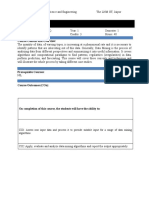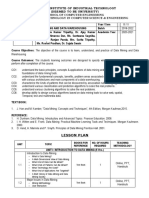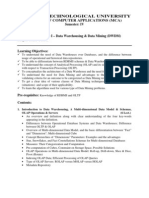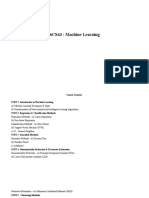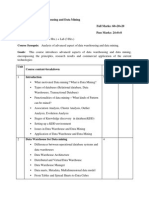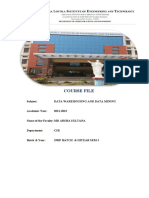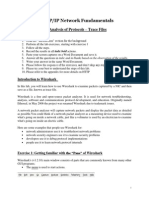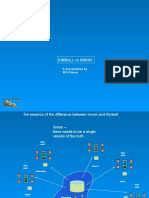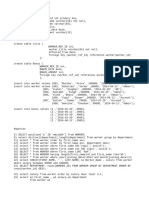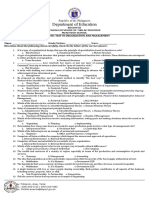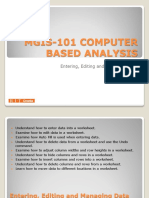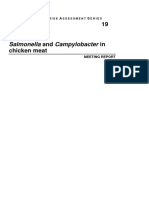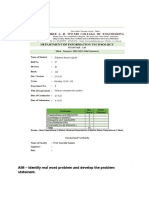0% found this document useful (0 votes)
9 views3 pagesCif DM
The document outlines the Data Mining course (CSE4011/CSE6031/CSE7011) offered by the Department of Computer Science and Engineering at LNMIIT, Jaipur, for M. Tech. students. It details the course structure, including prerequisites, outcomes, and topics covered, such as classification, clustering, and association pattern mining. The course aims to equip students with the skills to analyze data and implement various data mining algorithms effectively.
Uploaded by
DakshSharmaCopyright
© © All Rights Reserved
We take content rights seriously. If you suspect this is your content, claim it here.
Available Formats
Download as PDF, TXT or read online on Scribd
0% found this document useful (0 votes)
9 views3 pagesCif DM
The document outlines the Data Mining course (CSE4011/CSE6031/CSE7011) offered by the Department of Computer Science and Engineering at LNMIIT, Jaipur, for M. Tech. students. It details the course structure, including prerequisites, outcomes, and topics covered, such as classification, clustering, and association pattern mining. The course aims to equip students with the skills to analyze data and implement various data mining algorithms effectively.
Uploaded by
DakshSharmaCopyright
© © All Rights Reserved
We take content rights seriously. If you suspect this is your content, claim it here.
Available Formats
Download as PDF, TXT or read online on Scribd
/ 3
